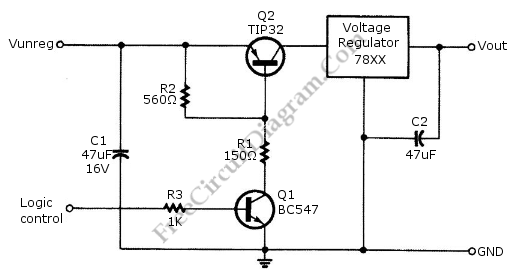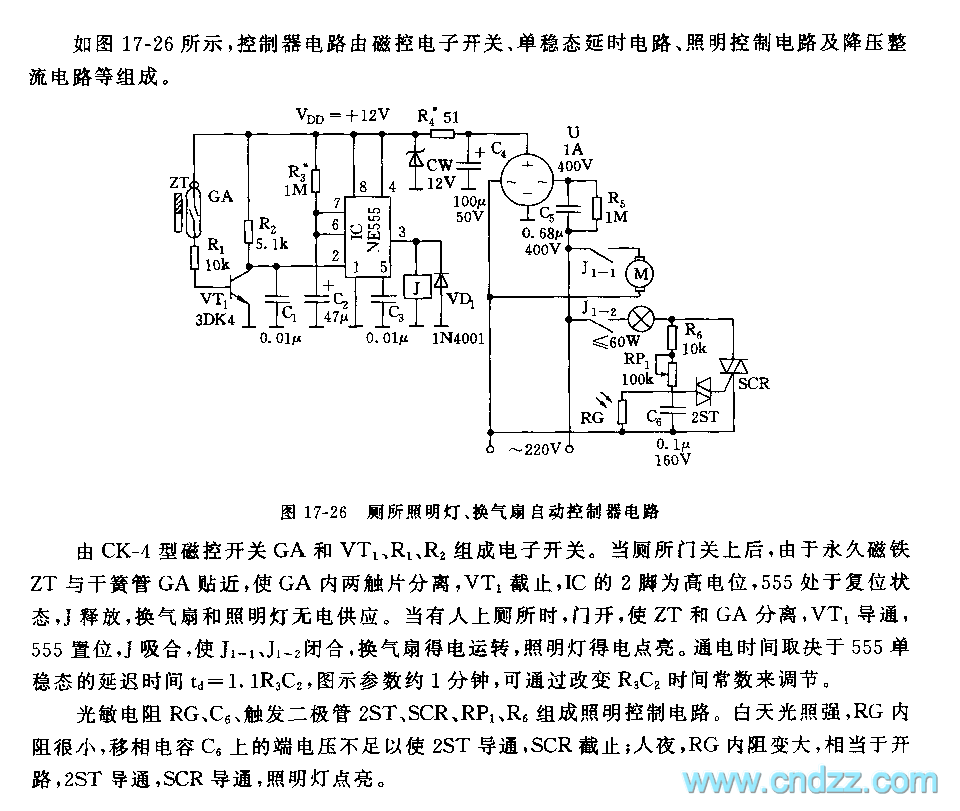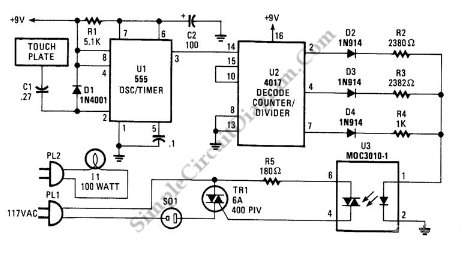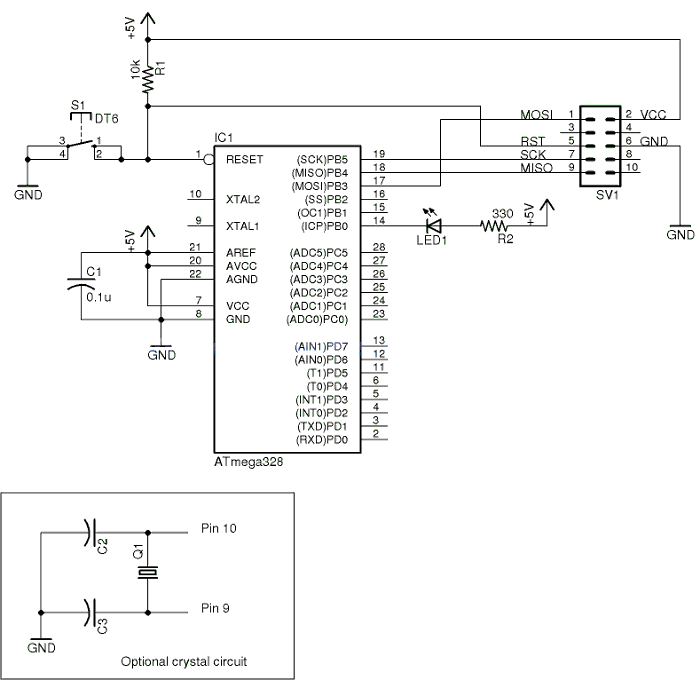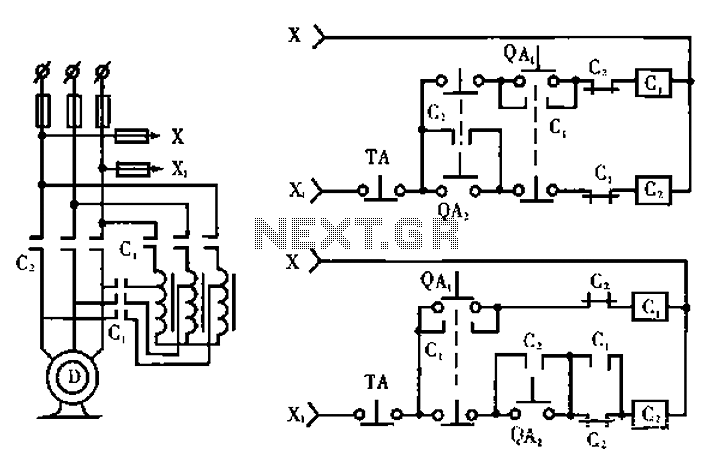
beam break detector for camera shutter or flash control
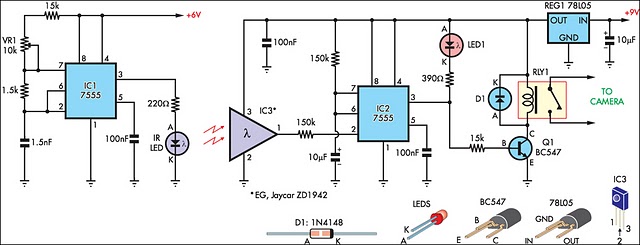
The IR detector (IC3) controls an LM 7555 CMOS timer (IC2) operating in monostable mode. When the beam is interrupted, IC2 is triggered, causing its pin 3 output to go high for approximately half a second. This action turns off LED1 and activates transistor Q1 to drive a 5V low-power relay.
The circuit utilizes an infrared (IR) detector (IC3) that senses the interruption of an IR beam, which serves as a triggering mechanism for the LM 7555 CMOS timer (IC2). In monostable mode, the timer is configured to produce a single output pulse when triggered. The timing duration is determined by external components connected to the timer, typically a resistor and capacitor, which set the time interval for how long the output remains high.
Upon the detection of a beam interruption, the IR detector sends a signal to pin 2 of the LM 7555, which triggers the timer. The output at pin 3 of IC2 then transitions to a high state, remaining active for a predetermined time, approximately half a second in this design. This output high state is crucial as it serves two primary functions: it turns off LED1, indicating the system is in an alarm state, and it activates transistor Q1.
Transistor Q1 functions as a switch, controlling the low-power relay. When Q1 is turned on by the high output from the LM 7555, it allows current to flow through the relay coil, energizing the relay. This action can be used to control various devices or alarms, depending on the application. The relay can switch on lights, sound alarms, or interface with other systems, providing versatility in its use.
The overall design emphasizes low power consumption, making it suitable for battery-operated applications. The use of the LM 7555 CMOS timer ensures minimal power draw during operation, while the relay allows for the control of higher power devices without directly engaging with the timer's output. This circuit can be effectively utilized in security systems, automatic lighting, or any application requiring beam interruption detection.The IR detector (IC3) controls an LM 7555 CMOS timer (IC2) which operates in mono stable mode. When the beam is broken, IC2 is triggered and its pin 3 output goes high for about half a second. This extinguishes LED1 and turns on transistor Q1 to drive a 5V low-power relay.. 🔗 External reference
The circuit utilizes an infrared (IR) detector (IC3) that senses the interruption of an IR beam, which serves as a triggering mechanism for the LM 7555 CMOS timer (IC2). In monostable mode, the timer is configured to produce a single output pulse when triggered. The timing duration is determined by external components connected to the timer, typically a resistor and capacitor, which set the time interval for how long the output remains high.
Upon the detection of a beam interruption, the IR detector sends a signal to pin 2 of the LM 7555, which triggers the timer. The output at pin 3 of IC2 then transitions to a high state, remaining active for a predetermined time, approximately half a second in this design. This output high state is crucial as it serves two primary functions: it turns off LED1, indicating the system is in an alarm state, and it activates transistor Q1.
Transistor Q1 functions as a switch, controlling the low-power relay. When Q1 is turned on by the high output from the LM 7555, it allows current to flow through the relay coil, energizing the relay. This action can be used to control various devices or alarms, depending on the application. The relay can switch on lights, sound alarms, or interface with other systems, providing versatility in its use.
The overall design emphasizes low power consumption, making it suitable for battery-operated applications. The use of the LM 7555 CMOS timer ensures minimal power draw during operation, while the relay allows for the control of higher power devices without directly engaging with the timer's output. This circuit can be effectively utilized in security systems, automatic lighting, or any application requiring beam interruption detection.The IR detector (IC3) controls an LM 7555 CMOS timer (IC2) which operates in mono stable mode. When the beam is broken, IC2 is triggered and its pin 3 output goes high for about half a second. This extinguishes LED1 and turns on transistor Q1 to drive a 5V low-power relay.. 🔗 External reference
